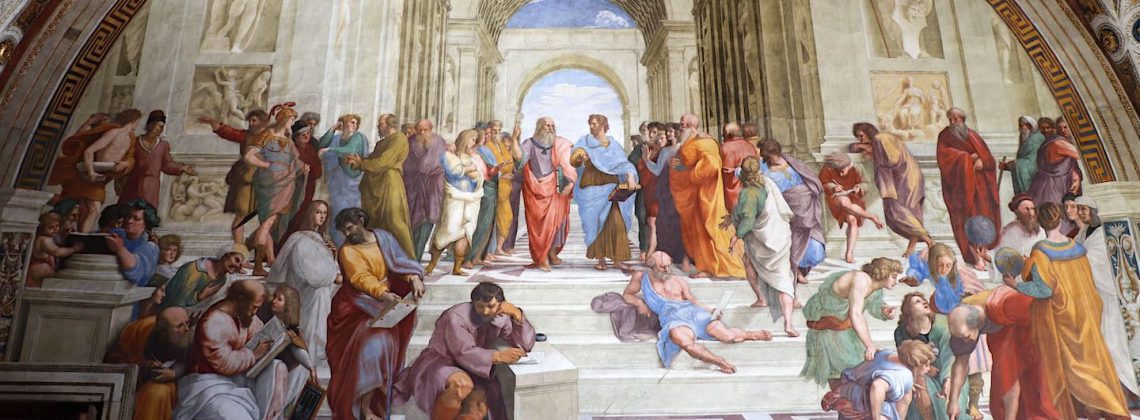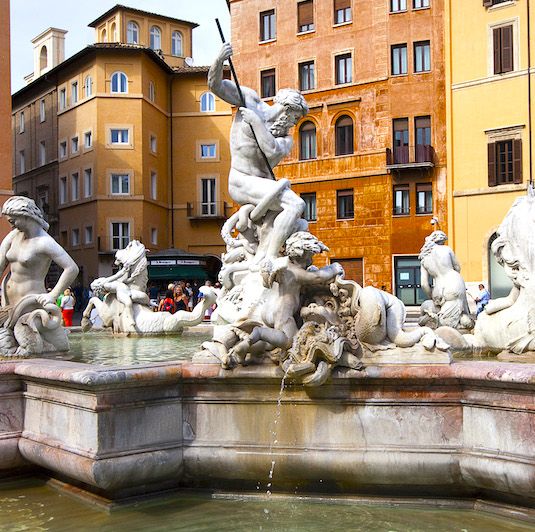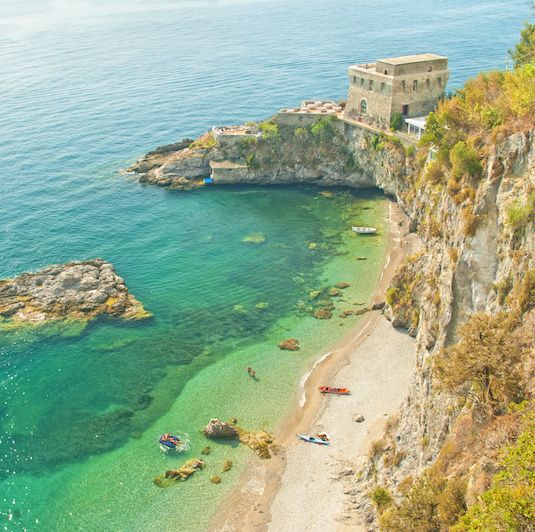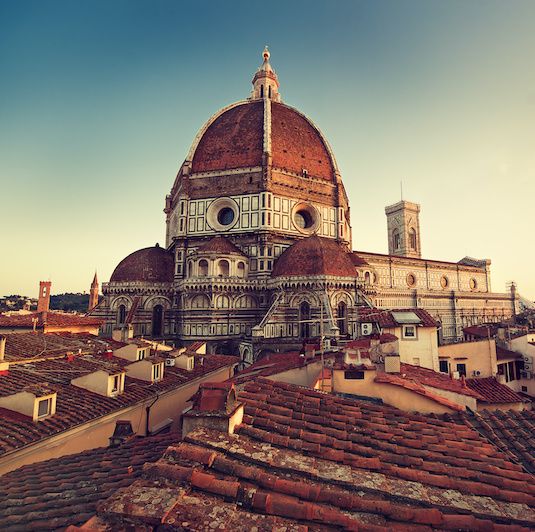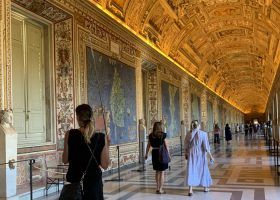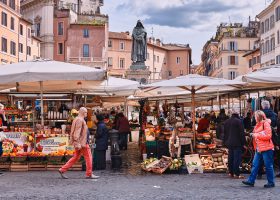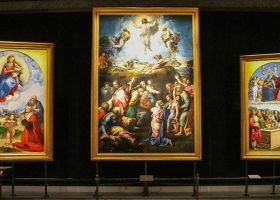If you are planning a Visit to the Vatican and want more out of your experience than a photo of the Sistine Chapel you should definitely have the Raphael Rooms on your radar, but what are you supposed to see? We asked Brandon, our resident licensed Vatican guide, and these are the top things he recommends you see on your visit to the Raphael Rooms.
Pro Tip: Planning your visit to the Vatican in Rome? Bookmark this post in your browser so you can easily find it when you’re in the city. See our guide to Vatican City for more planning resources, our top Vatican tours for a memorable trip, and how to visit the Vatican.
What To See in the Raphael Rooms
The Raphael Rooms should definitely be on your Vatican bucket list. They’re included with your general admission ticket to the Vatican Museums. Even though they’re on the way to the Sistine Chapel, it’s very easy to miss them. You’ll take a detour away from the Sistine Chapel to see them, but don’t worry—follow the signs and you’ll find your way back.
A visit to these exquisite rooms is well worth it. You’ll come away with a deeper appreciation for some of the main principles of Renaissance art—perfect symmetry and bursting colors!
The Raphael Rooms were commissioned by Pope Julius II (1503 to 1513) supposedly because he refused to live in the Borgia Apartments of his predecessor (and rival) Pope Alexander VI on the floor below due to his hatred for the man.
The Raphael Rooms were, perhaps, an effort to outshine the Borgia Apartments, which are directly below the rooms. These rooms were also used by his successors, specifically Leo X the Medici Pope (1512 to 1521).
The four rooms known as the Raphael Rooms were painted by Raphael and his students between 1508 and 1524. They are the Room of Constantine, the Room of Heliodorus, the Room of the Segnatura, and the Room of the Fire in the Borgo. When you visit, look out for these top things to see in the Raphael Rooms.
Not ready to book a tour? See if a Vatican tour is worth it.
11. Battle of Ostia
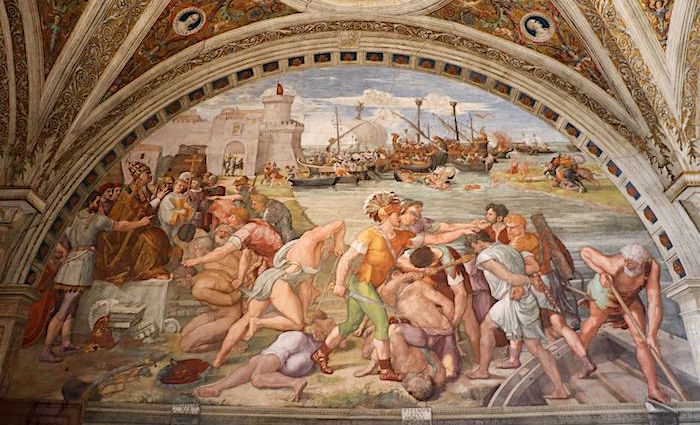
Raphael | 1514 – 1517 | Fresco | Raphael Rooms: Room of the Fire in the Borgo
The Room of the Fire in the Borgo, where you’ll see the Battle of Ostia fresco, was mostly decorated by Raphael’s students. The themes of the paintings were taken from the lives of the other great popes named Leo. This room was the private dining room of the pope—imagine these paintings in your dining room!
As the story goes, a Saracen fleet attacked the papal fleet in 849, and Leo IV was only saved due to a storm. In the painting, you can see Pope Leo IV on the left (with the face of the contemporary pope Leo X) thanking the divine for the intervention.
Leo IV erected the first walls around the Vatican complex because of these attacks, which is why you might hear the Vatican called the “Leonine city.” When you visit Rome, you’ll still be able to see a small piece of these walls next to St. Peter’s church.
10. Expulsion of Heliodorus

Raphael | 1511 | Fresco | Raphael Rooms: Room of Heliodorus
The Expulsion of Heliodorus describes a story from the second book of Maccabees. The Syrian king, Seleucus, ordered Heliodorus to steal the treasure from the temple of Jerusalem.
If you don’t know the story, you can tell from the painting that things didn’t end well for poor Heliodorus. It doesn’t help that the temple had three angels of the Lord to stop him!
It is clear that Heliodorus was punished for attempting to steal the treasure of Jerusalem. What many modern viewers fail to see is that most paintings had an allegorical meaning as well.
Back in this period, the pope was a king of sorts, who ruled over actual tracts of land. Therefore he wasn’t just a spiritual leader, but also a temporal leader. This painting, reinforced by the fact that Pope Julius II has a cameo (sitting in a chair on the left), is a clear message not to mess with the temporal possessions of the Church.
The purpose of the Room of Heliodorus was originally for private audiences with the pope. The room’s theme is definitely political and aims to show not only the power of the church, but the political agenda of Pope Julius II who wanted all the foreign occupiers out of the Italian Peninsula.
Interesting Fact
In the painting, Julius II is seated on the left and has a full white beard. A beard was not a common feature for popes in the 16th century. In 1510, he supposedly vowed not to shave his beard until the entire Peninsula of Italy was freed from French occupation. He died three years later with the beard still there.
Popular Vatican Tours
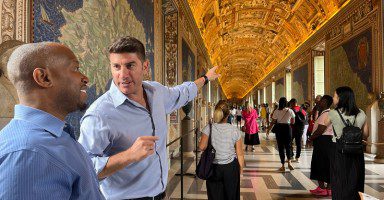
Best Selling Tour
Privileged Entrance Vatican Tour with Sistine Chapel
Without the right access, visiting the Vatican means fighting crowds, long waits, and missing the most significant rooms and works of art. Our privileged entrance tour offers more than just entry—it’s an immersive experience led by a storytelling guide who brings the Vatican to life. Skip the line and explore the Vatican Museums, including the Raphael Rooms, the Sistine Chapel, and St. Peter’s Basilica with engaging insights that make each moment memorable and meaningful.
See Prices
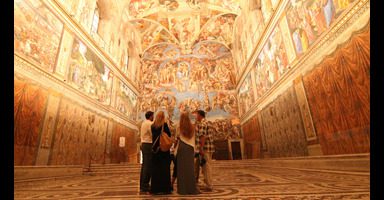
Best Price!
Exclusive Sistine Chapel After Hours Small Group Tour
When the Vatican Museums close to the public, you step inside, with no other groups and no crowds—just you, a handful of others, and Michelangelo’s Sistine Chapel in perfect silence. On this rare after-hours tour, wander the Vatican’s galleries as they were meant to be seen, free from the chaos of the day. With a small group and expert guide, explore the Raphael Rooms, the Gallery of Maps, and the treasures of the Vatican as few ever will.
See Prices
Not ready to book a tour? Check out our best Vatican tours to take and why.
9. The Disputation on the Holy Sacrament
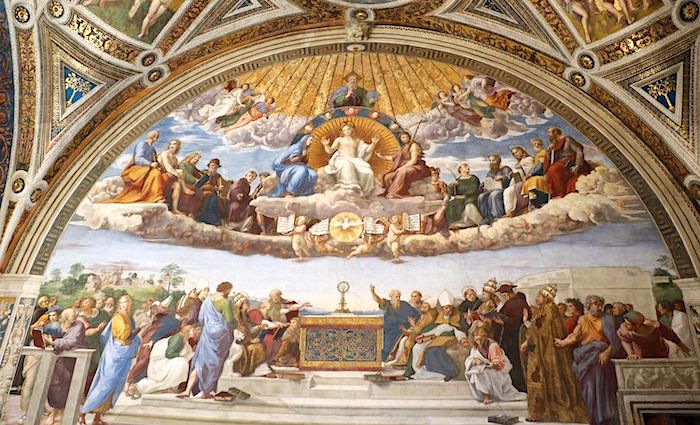
Raphael | 1508 | Fresco | Raphael Rooms: Room of the Segnatura
The Room of the Segnatura was originally used by Pope Julius II as his private office and library. In the mid-16th century, however, it became the room where the pope would sign important documents, hence the name Segnatura or “signing.” This room was also the first room where Raphael started painting and became the most famous.
Here, you’ll find the Disputation on the Holy Sacrament, which Raphael he started painting when he was just 25 years old. It saddens me to think of what he could have accomplished if he hadn’t died at 37. His maturity as a painter at such a young age is on full display here with such a large painting reflecting both perspective and fullness of character.
In the middle of the cloud is Jesus with the Virgin Mary and St. John the Baptist on either side. Others close to him include God above, Adam, and the Saints Peter and Paul.
Below, there are some contemporary portraits that Raphael liked to sneak in. For example, he portrayed the famous early Renaissance painter Fra Angelico and his friend Donato Bramante.
Supposedly, Julius II was so impressed with this painting that he ordered the destruction of the other paintings so that Raphael could decorate the rest of the room.
8. The Miracle of Bolsena
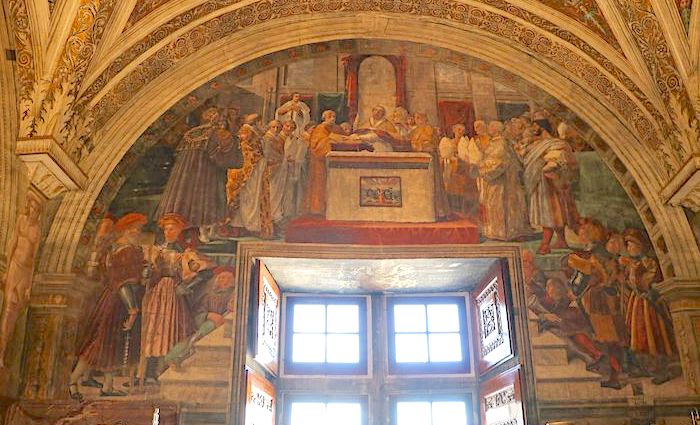
Raphael | 1513 | Fresco | Raphael Rooms: Room of Heliodorus
This may be one of the most overlooked paintings in all of the Raphael Rooms. Besides the actual story behind the painting, the genius Raphael showed in creating this is hard to describe.
The Miracle of Bolsena depicts a story that took place in the small town of Bolsena in 1263. The painting explains how a priest from Bohemia doubted the transubstantiation. Put simply, this is the belief that the bread and wine Catholics take during the Eucharist transform into the blood and body of Christ.
As the tradition goes, when the priest broke the host, many drops of blood fell onto the white cloth that the priest used to hold the chalice. Understandably, it was a big deal. They preserved the cloth and even built a cathedral in Orvieto as a result.
The Bohemian priest is completely amazed by this, as you can imagine. However, Raphael also painted Pope Julius II in the painting on the right who, of course, was not amazed at all. As pope, he had no doubts about this common miracle.
The irregular setting of the window is practically rendered invisible by Raphael’s brilliant solution to this problem. He placed the altar in the center, enlarged the platform of the altar, and surrounded the entire upper level with a painted wooden arch. He then filled the large space with noblemen charged with carrying the papal sedan chair!
Enrico Bruschini, Art Historian and Official Vatican Tour Guide
7. Vision of the Cross
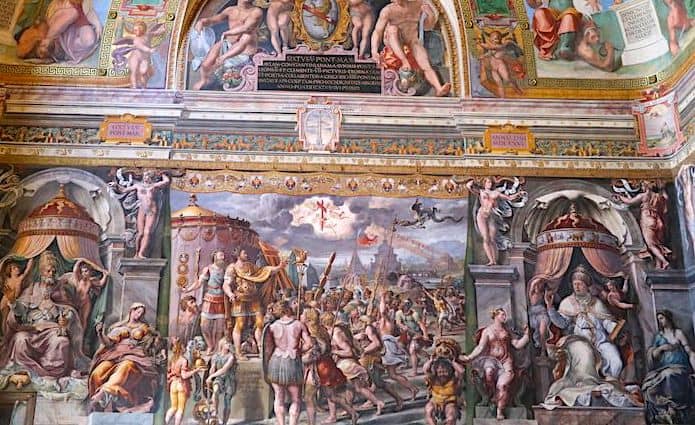
Giulio Romano (Raphael’s Drawing) | After 1520 | Fresco | Raphael Rooms: Hall of Constantine
The Hall of Constantine was the last of the four rooms painted and, as a consequence, would have been painted primarily by Raphael’s students even though they are attributed to him. This is because he made the drawings and his students painted according to his plans. For example, this particular painting was done by his best student, Giulio Romano.
The room is named in honor of the first Christian Emperor, Constantine the Great. His time in power had huge, positive implications for the church and its future. It is here that you’ll see the Vision of the Cross.
The night before the decisive battle against his enemy Maxentius, Constantine saw a white cross burn across the night sky. This premonition led him to believe that if he replaced the emblem of eagles with the cross, he would be victorious.
Remember that Christianity in the Roman Empire up to this point was pretty much illegal, although widely tolerated. Needless to say, having the Emperor replace the Eagle with a Christian symbol was a pretty big deal.
In the lower right corner of the fresco, we see a dwarf who carries an enormous gold helmet. This is not an invention of the painter, but rather a graceful homage to a dwarf who actually lived at the papal palace as the court jester of Pope Leo X and whose name, fortunately, has been conserved: Gradasso (the Boaster) Berrettai.
Enrico Bruschini, Art Historian and Official Vatican Tour Guide
6. Battle of the Milvian Bridge
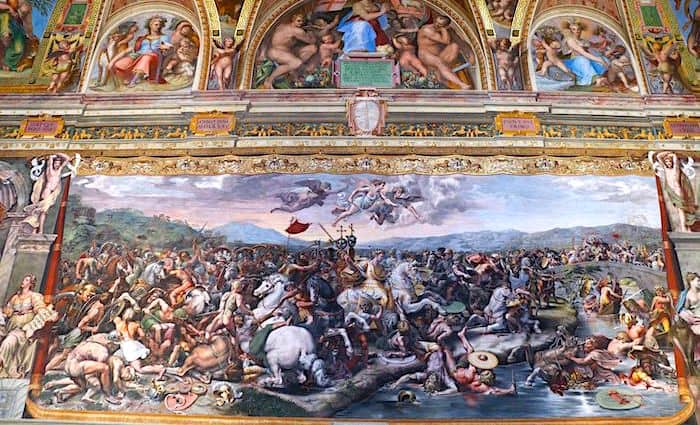
Giulio Romano (Raphael’s Drawing) | After 1520 | Fresco | Raphael Rooms: Hall of Constantine
This is the battle that followed the previous night’s premonition depicted in the Vision of the Cross. The battle takes place at the Milvian bridge (which you can still cross today) in the northern part of the city. This victory, in A.D. 312, is considered the first Christian victory ever.
You can see Constantine victorious on a white horse with angels above his head and the defeated Maxentius on a brown horse in the river drowning. It’s an epic fresco of massive proportions and definitely one of the top things to see in the Hall of Constantine and one of the top things to see in all of the Raphael Rooms.
5. The Victory of Christianity Over Paganism (Ceiling)
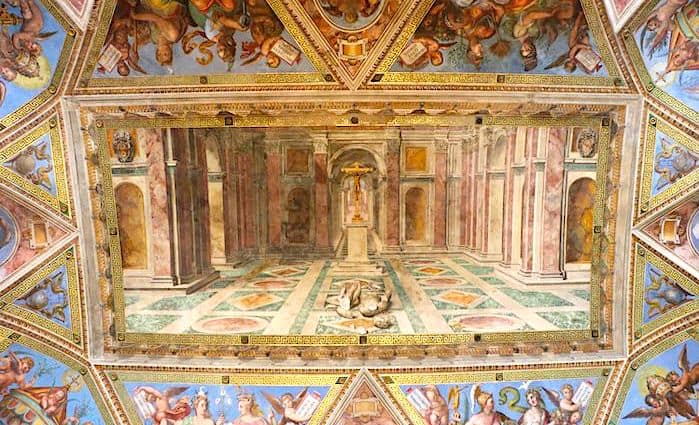
Tommaso Laureti | 1585 | Fresco | Raphael Rooms: Hall of Constantine
This jewel of a painting is missed by most people—don’t forget to look up at the ceiling! If ever there was one image to encapsulate the expression “A picture paints a thousand words,” this is the one.
What better way to show one’s triumph over another? You replace the exact thing you triumphed over! Originally, there was a statue of the pagan god Mercury (Greek Hermes) on the pedestal. Replaced by a Christian cross, the previous statue (or symbol) has been crushed to pieces below. There is no truth behind this, but I imagine that this scene actually happened at one point.
I have stared at this painting many times and what never ceases to amaze me is the depth Laureti was able to achieve in the painting. The 3D effect on a 2D form is mesmerizing.
4. Encounter of Leo the Great with Attila
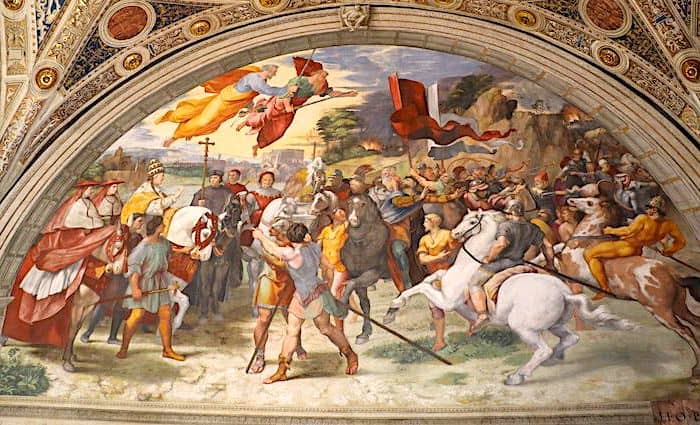
Giulio Romano and Giulio Penni (Raphael’s Drawing) | 1512 | Fresco | Raphael Rooms: Room of Heliodorus
A personal favorite, the painting depicts part of a real story in history when Attila the Hun made his way to Rome in A.D. 452 and stopped at the gates of Rome. Historically, it appears that the city, already decimated and plundered many times over at this point, had no defense against Attila. So, just Pope Leo I went out to greet him. After the discussion, Attila turned his group of warriors back and never sacked Rome.
According to the legend and also depicted in these paintings, during the encounter Saints Paul and Peter were by the pope’s side and scared him so much that he turned his army around. You’ll see the pope very calmly expelling the barbarians from Rome, while the Barbarian King is scared out of his mind upon seeing the angels and leaves hurriedly on his horse.
Interesting Fact
Julius II died during its painting and Leo X took over as pope. This is why you see Leo X’s face twice, once as the cardinal and again as the pope himself!
3. Fire in the Borgo
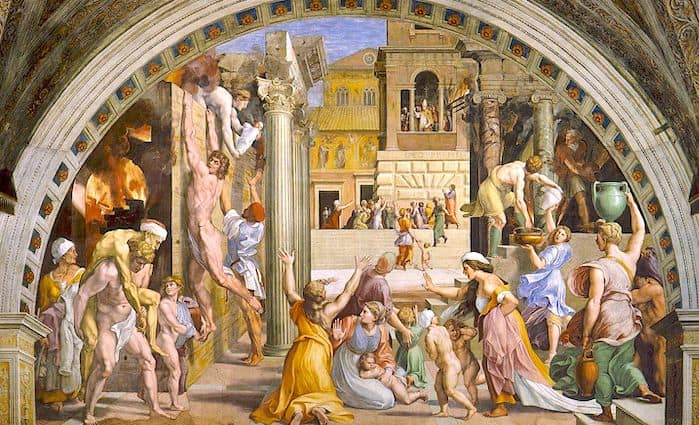
Raphael | 1514 – 1517 | Fresco | Raphael Rooms: Room of the Fire in the Borgo
I’m a fan of Raphael’s work. However, I can still call him out when he does weird stuff. What’s the first thing you notice in this painting? Aside from the story, look at those muscles! The women, children, and elderly all have excessive muscle tone. The men have muscles popping out of places where muscles don’t even exist!
When they were painting this room, the Sistine Chapel had already been unveiled and Michelangelo’s muscular figures had become famous. Raphael’s students adopted this style, which you can see in this painting. However, they should have studied anatomy a bit more.
This painting shows a story from the “Liber Pontificalis” that told of a huge fire breaking out in the Borgo (the area around St. Peter’s church) in 847. The story goes that everyone was in a panic and Pope Leo IV (847 to 855) solemnly walked out on the balcony of his palace, blessed the fire, and it was extinguished immediately.
2. Liberation of St.Peter
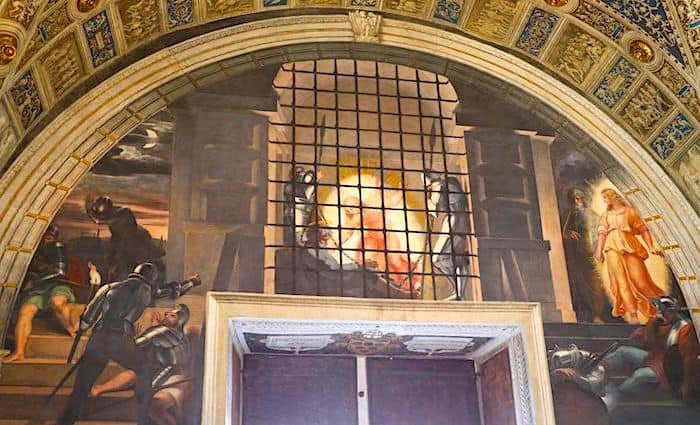
Raphael | 1512 | Fresco | Raphael Rooms: Room of Heliodorus
This entire fresco is a brilliant display of light effects. As you look closely at the painting, you’ll notice first the extreme splendor of the light of the angel herself whose glow reflects in the armor of the stunned prisoners in the room. Compare that with the light of the rising Sun to the left and also the natural light coming in from the window below.
Raphael was able to show, 500 years ago, how a room could be lit up in a painting. Besides the light, the robust colors used makes this painting shine. I remember walking into this room for the first time after it had been cleaned and the vibrance of colors was shocking!
Remember also that the medium used to paint this was fresco, which is unforgiving. You have to be fast and make no mistakes—a detail that makes this painting even more precious.
The story is about the first pope, St. Peter, who is a prisoner in Rome. In the evening, an angel comes and breaks his chains to set him free. Julius II commissioned this painting since, before becoming pope, he was the Titular Cardinal of St. Peter in Chains in Rome. In that church, you can still see the chains St. Peter wore that were broken by the angel.
Popular Rome Tours
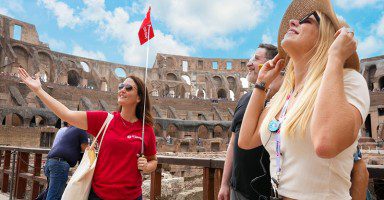
Best Selling Tour
Rome in a Day Tour with Colosseum and Vatican Museums
Seeing the best of Rome in a single day might seem like a big undertaking, but our expertly designed tour makes it effortless with skip-the-line tickets, included transportation, and engaging guides to lead the way. In just 7 hours, you’ll visit renowned sites like the Sistine Chapel, Colosseum, Trevi Fountain, and Pantheon. With fascinating stories at every stop, you can skip the stress and immerse yourself in the vibrant heritage and culture of Rome all in one remarkable day.
See Prices

Best Price!
Privileged Entrance Vatican Tour with Sistine Chapel
Without the right access, visiting the Vatican means fighting crowds, long waits, and missing the most significant rooms and works of art. Our privileged entrance tour offers more than just entry—it’s an immersive experience led by a storytelling guide who brings the Vatican to life. Skip the line and explore the Vatican Museums, including the Raphael Rooms, the Sistine Chapel, and St. Peter’s Basilica with engaging insights that make each moment memorable and meaningful.
See Prices
Not ready to book a tour? Find out if Rome tours are worth it.
1. School of Athens
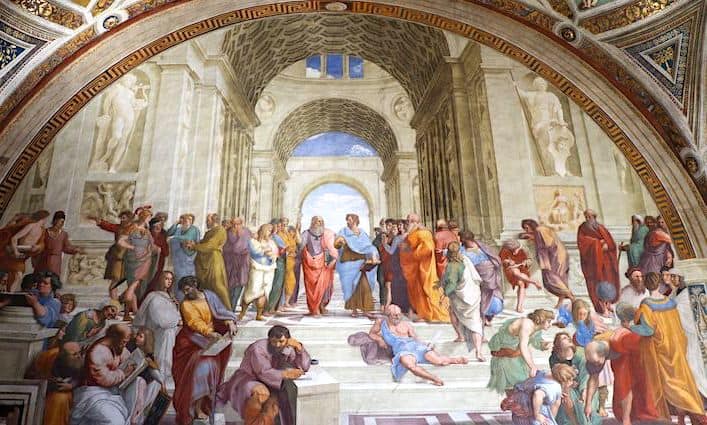
Raphael | 1508 – 1511 | Fresco | Raphael Rooms: Room of the Segnatura
The School of Athens is arguably one of the most famous paintings by Raphael due to its widespread use in textbooks. With this painting, he established himself as one of the most famous High Renaissance painters in the world. The painting, for our purposes, is actually famous for two reasons.
Firstly, it is harmonious, symmetrical, and celebrates ideal beauty in all its forms, which was important in Renaissance paintings. Secondly, this painting is basically a yearbook of the most famous artists of the early 15th century. Raphael used the faces of his friends as models for some of the famous people:
- Leonardo Da Vinci is Plato pointing a finger in the air.
- Bramante is Euclid, bending over a chalkboard.
- Raphael puts himself in the painting on the far right side staring directly at us.
According to legend, while Raphael was painting this room, Michelangelo was painting the Sistine Chapel. One day, he got a peek of what Michelangelo was doing and was so impressed that he came back upstairs and broke a piece of plaster off the wall and painted the face of Michelangelo as a tribute to how good he was.
Raphael saw the frescoes of Michelangelo and changed style
Giorgio Vasari, Raphael’s Contemporary and Biographer
Vatican Tours with Raphael Rooms
Supposedly, if you stand in front of each art piece for one minute in the Vatican Museums, it would take you 12 years to see everything. How incredible is that! While it’s certainly possible to visit the museums on your own, I highly recommend you join a tour guide.
Not only will a tour guide get you skip-the-line access, they’ll also guide you through the Vatican Museums quickly. Your guide will get you in and out before you go into overload without missing anything important.
Best of all, you’ll hear all the intriguing stories and history that make this museum and its collections so fascinating. It’s an added layer that will make your Vatican visit all the more meaningful.
There are lots of Vatican tour options to suit your interests and schedule, compare our best Vatican tours. In most of our Vatican tours, you’ll see the Raphael Rooms up close, so check them out and reserve your spot!
Not ready to book a tour? Find out if a Vatican tour is worth it.
Here is Where to Stay in the Most Popular Destinations
Rome, Florence, Venice, and the Amalfi Coast and Capri

